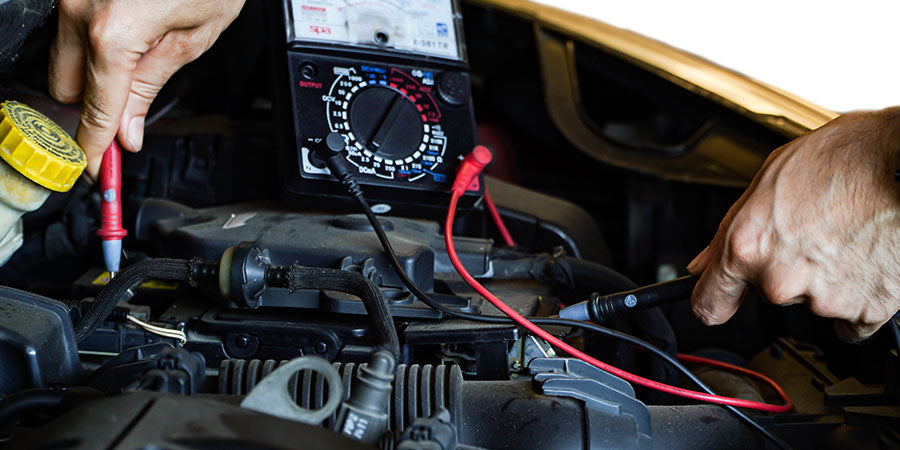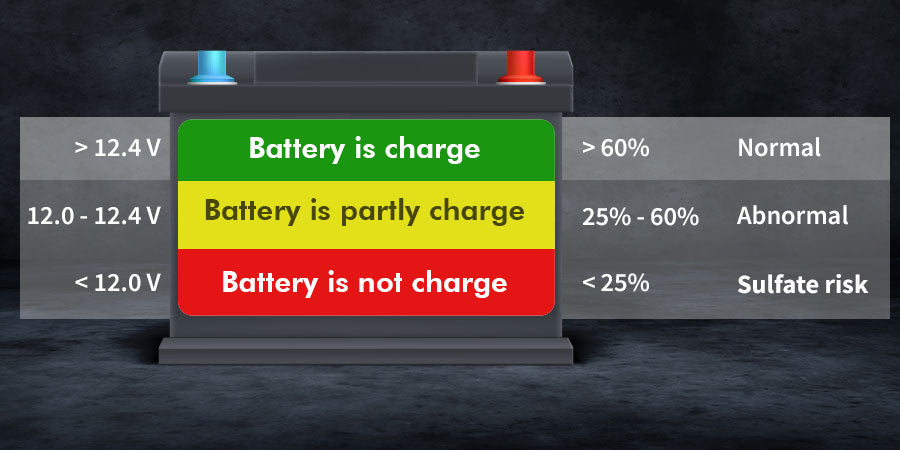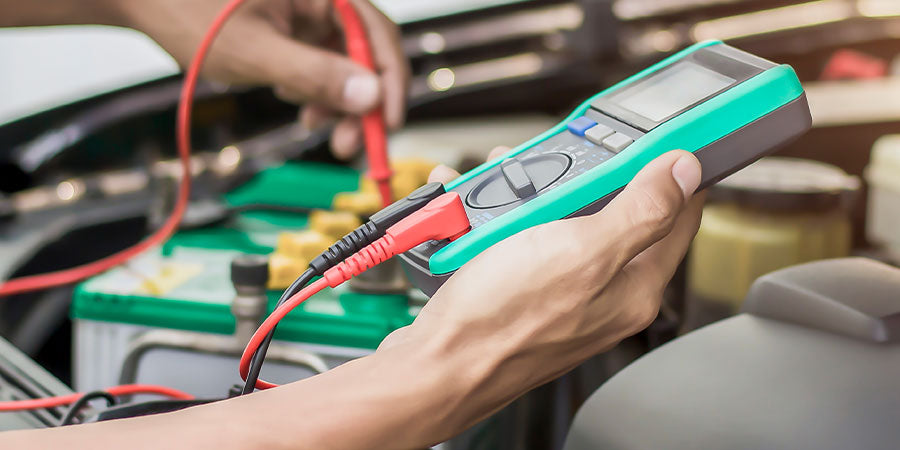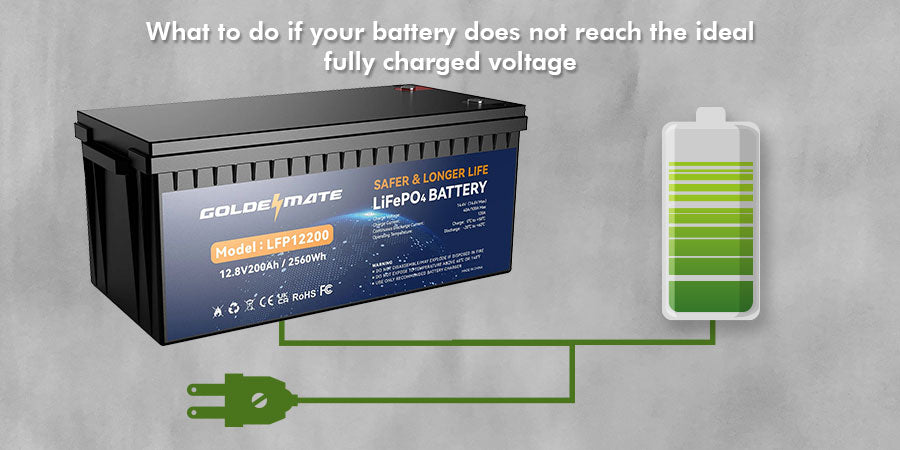Do you have a 12-volt battery? Maybe in your car, boat, RV, or something else that runs on a 12-volt battery? If so, you probably wonder - what should my battery read when it's charged up? Knowing the voltage for a full battery can help you take good care of it.
In this article, we'll talk about 12-volt batteries. We'll look at what their voltage should be after a full charge. We'll also share tips on how to measure and maintain your battery. Let's get started!
Understanding 12-Volt Batteries
Basic Components And Chemistry Of A 12-Volt Battery
A 12-volt battery has a plastic case with metal plates inside. The plates are positive or negative. It also contains an electrolyte liquid, which usually is a sulfuric acid and water mix.
How A 12-Volt Battery Works And What Constitutes A Full Charge
When the battery charges, electrons collect on the negative plate. When it discharges to power devices, the electrons flow out. Charging pushes in electrons using the charger's voltage. Discharging takes electrons out to make power flow. When all plates are covered in electrons, the battery has a full charge.

What Constitutes A Full Charge?
A full charge is when all the battery's plates are covered with electrons and ready to release them to provide power. This happens when the voltage reads around 12.6-12.8 volts. At this level, the battery has its maximum energy stored for powering devices.
The Role Of Voltage In Determining Battery Charge State
Voltage measures how strongly the electrons are pushed from the battery. More voltage = more power available. Less voltage = low battery charge. Checking the voltage reading shows if the battery is fully charged. Around 12.6-12.8 volts means all the electrons are replenished and ready to flow.
Voltage Levels And Battery Charge
Voltage as an Indicator of Charge Level
Voltage measures the electrical pressure that pushes electrons out of the battery. Think of voltage as the strength of a water hose. Higher voltage gives electrons more pushing force to create power.
Lower voltage means the electrical pressure is weaker, so less power can flow out. Checking voltage shows the charge level.
The Ideal Voltage Reading For a Fully Charged 12-Volt Battery
For a 12-volt battery to have a full charge, the ideal voltage is between 12.6-12.8 volts. At this voltage level, the electrical pressure is strong enough that the battery can provide its maximum power capacity.
Variations In Fully Charged Voltage Readings Across Different Battery Types
The target full voltage may vary slightly between battery types:
- Flooded batteries: Around 12.7 volts fully charged.
- AGM batteries: 12.8-13.2 volts is 100% charged.
- Gel batteries: 13.5-13.8 volts fully charged.
So, check what battery type you use, and its ideal voltage range when fully charged. But for most 12-volt batteries, 12.6-12.8 volts is considered fully charged.

How To Measure Battery Voltage
Tools Required For Measuring Battery Voltage
To measure battery voltage, you need a multimeter. The multimeter measures voltage, current, and other electrical values. Multimeters have leads you connect to the battery terminals.
Step-By-Step Guide On How To Safely Measure The Voltage Of A 12-Volt Battery
Follow these safe steps:
- Turn off anything running on the battery, like lights or engines.
- Connect the red multimeter lead to the positive (+) terminal.
- Connect the black lead to the negative (-) terminal.
- Set the multimeter to measure "DC Volts".
- Read the voltage number on the multimeter screen.
- Disconnect the leads when done.
Tips For Ensuring Accurate Voltage Readings
To get accurate readings:
- Ensure the multimeter leads have a solid connection to the terminals.
- Check the voltage several times and write down the numbers.
- Let the battery rest for 5-10 minutes between voltage checks.
- Test voltage again after charging or using the battery.
- Compare readings over time to see any discharge trends.
Consistent testing gives a clear picture of the battery's charge level and condition.
Interpreting Voltage Readings
What A Voltage Reading Above 12.6 Volts Indicates About A Battery's Charge Level
A voltage reading over 12.6 volts means the battery is fully charged. The electrical pressure is strong enough to push maximum power. The battery is ready to deliver at full capacity.
Understanding Voltage Readings Between 12.4 Volts To 12.6 Volts
Readings from 12.4-12.6 volts indicate the battery is charged at 75-100%. It may need a brief recharge to reach full capacity. The lower the voltage, the lower the charge level.
Signs Of Undercharging And Overcharging Based On Voltage Readings
Readings under 12.2 volts show the battery is under 50% charged and needs charging. Over 12.8 volts indicates possible overcharging.
Factors Affecting Voltage Readings
Temperature Impacts On Battery Voltage And Charge Level
Colder temperatures make the battery chemistry work slower. This causes lower voltage readings when cold. Hot temperatures speed up the chemical reactions so voltage reads higher when it's hot out.

How Age And Usage Affect Battery Voltage Over Time
As batteries age with normal use, they lose some of their power capacity over the years. So an older battery will often read lower voltages than a brand-new battery, even when fully charged. Heavy use without recharging also discharges batteries faster, dropping the voltage.
The Influence Of The Charging System On Voltage Readings
Faulty alternators or chargers may fail to charge batteries adequately. This will lead to lower voltage readings than expected because the charging system did not restore the battery to a full charge. Checking the charging equipment is important to ensure batteries reach full voltage.
Maintaining A 12-volt Battery
Best Practices For Charging And Maintaining A 12-Volt Battery
Use a high-quality 12-volt battery charger to keep your battery properly charged. Choose a charger with an amperage rating between 3-10 amps. Lower amperages are better for slow, gentle charging.
When possible, charge the battery overnight which allows time to fully reach maximum voltage. Use an automatic shut-off charger to avoid overcharging. Always disconnect the charger in the morning before using the battery.
Keep the battery posts and terminals clean of dirt, salt, and corrosion. They impede charging and voltage readings. Check that connections are tight so electricity can flow easily.
The Importance Of Regular Voltage Checks To Extend Battery Life
Checking the battery voltage regularly, about 1-2 times per month, allows you to monitor its charge level and catch any problems early. Look for drops in the readings over time. This can reveal if a battery is wearing down or discharging too quickly. Catching issues early means you can correct them to extend the battery's overall life.
Recommendations For Chargers And Charging Routines
Use a smart battery charger that automatically shuts off when the battery is fully charged. This avoids overcharging. Allow time for a full charge - batteries may need 4-12 hours. Check that charger connections are clean. Store batteries properly when not in use. Fully recharging monthly extends battery life vs. letting them sit in a partial state of charge. Proper charging and care will get the years of service a quality 12-volt battery can deliver.

Troubleshooting Common Issues
What To Do If Your Battery Does Not Reach The Ideal Fully Charged Voltage
If your battery won't charge fully to 12.6-12.8 volts, try charging it for an extended period. Older batteries may need more charging time. Also, check that the charger connections are clean and tight. Consider testing your alternator and charging system to make sure they are working.

How To Address Fluctuations In Voltage Readings
Fluctuations in readings could mean a loose connection when testing voltage. Make sure your multimeter leads are securely attached to the battery terminals. Consistent fluctuations may indicate it's time for a new battery if yours is over three years old.
When To Consider Battery Replacement
Think about replacing a battery that is more than three years old. Older batteries gradually lose power capacity. If the battery won't charge fully or hold a charge for long, it could be time for a new one. Also, replace the battery if the terminals are corroded or cracked. Replacing older batteries before failure avoids being stranded with a dead battery.
Conclusion
Keeping your 12-volt battery well charged is super important. Checking the voltage regularly shows if the charge is dropping. Fully recharging the battery once a month keeps it in top condition. This helps avoid being stuck with a dead battery.
Visit our site today to learn more about batteries and find helpful maintenance tips. With the right knowledge, you can keep your battery running strong for years!



Share:
How Many Watts Does Your Coffee Maker Use? A Complete Guide
How to Choose the Best Lithium Marine Batteries in 2024